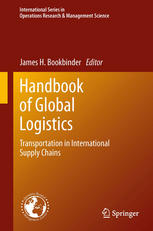

Most ebook files are in PDF format, so you can easily read them using various software such as Foxit Reader or directly on the Google Chrome browser.
Some ebook files are released by publishers in other formats such as .awz, .mobi, .epub, .fb2, etc. You may need to install specific software to read these formats on mobile/PC, such as Calibre.
Please read the tutorial at this link: https://ebookbell.com/faq
We offer FREE conversion to the popular formats you request; however, this may take some time. Therefore, right after payment, please email us, and we will try to provide the service as quickly as possible.
For some exceptional file formats or broken links (if any), please refrain from opening any disputes. Instead, email us first, and we will try to assist within a maximum of 6 hours.
EbookBell Team

4.0
86 reviewsGlobal logistics entails tradeoffs in facility location, distribution networks, the routing and scheduling of deliveries by different modes of travel (e.g., air, water, truck, rail), procurement, and the overall management of international supply chains. In an increasingly global economy, then, logistics has become a very important matter in the success or failure of an organization. It is an integral part of supply chain management that involves not just operations management considerations, but production engineering and regional science issues as well.
As Director of the prestigious Waterloo Management of Integrated Manufacturing Systems Research Group (WATMIMS), which specializes in logistics and manufacturing, Jim Bookbinder is uniquely qualified to edit a handbook on global logistics. He has aligned a set of prominent contributors for this volume.
The chapters in the Handbook are organized into discrete sections that examine modes; logistics in particular countries; operations within a free-trade zone; innovative features impacting international logistics; case studies of specific companies; and a look toward the future. Contributors are from the Americas, Europe, and Asia, and they push the state of the art in areas such as trade vs. security; border issues; cabotage within NAFTA; Green logistics corridors within the EU; inland ports; direct-to-store considerations; and all the questions that need to be confronted in any given region. This will certainly appeal to researchers and practitioners alike, and could serve as required or supplementary reading in graduate-level logistics courses as well.